Abstract
Background: Cuachalalate (Amphipterygium adstringens) is one of Mexico’s most commercialised medicinal plants, and its natural populations are mainly found in this country. The high demand for stem bark (SB) has risked its survival, making it necessary to develop sustainable strategies.
Aim: This study aimed to identify bioactive compounds in branch bark (BB) and evaluate their antipathogenic and antivirulence capacities.
Setting: The study was conducted in the low deciduous forest (LDF) of the State of Puebla, Mexico.
Methods: Bioactive metabolites in BB were profiled by high-performance thin-layer chromatography (HPTLC). The chemical composition of aqueous bark extracts was scrutinised by high-performance liquid chromatography-mass spectrometry (HPLC-EM-SQ-TOF system) and molecular network analysis. The folk method’s antipathogenic capacity was determined in a burn model in mice infected with Pseudomonas aeruginosa. Finally, the antivirulence properties of bark organic extracts were determined.
Results: The BB contained masticadienoic, 3α-hydroxymasticadienoic and anacardic acids, also present in SB. The aqueous extracts showed the presence of flavonoids, catechins and saponins in both barks. The folk method using BB extracts significantly reduced mouse mortality and prevented sepsis development. This might be related to the capability of extracts to block the production of bacteria virulence factors.
Conclusion: The similarity in bioactive metabolites and biological activity between SB and BB of cuachalalate suggests that using BB as a medicinal agent could be a practical and sustainable strategy. This approach could potentially prevent the overexploitation of cuachalalate’s SB, contributing to its conservation.
Contribution: This study proposes a sustainable strategy for using cuachalalate as a medicinal agent using BB, a renewable source.
Keywords: cuachalalate; endemic plant; antivirulence; burns; Pseudomonas aeruginosa; branch bark.
Introduction
Mexico’s low deciduous forest (LDF) is distributed mainly along the Mexican Pacific slope up to Chiapas, with some areas extending north of the Yucatan Peninsula (CONABIO 2013). Its surface is estimated to cover 11.7% of the national territory and contains many endemic plant species (Trejo & Dirzo 2000).
The cuachalalate tree (Amphipterygium adstringens) is not just one of Mexico’s most commercialised medicinal plants but also a non-timber resource characteristic of the LDF (Beltrán-Rodríguez et al. 2018). The stem bark (SB) of the cuachalalate, used since pre-Hispanic times for its medicinal properties, has been scientifically validated, opening a world of potential for its use in modern medicine (Sotelo-Barrera et al. 2022).
Currently, the cuachalalate marketing chain is heavily reliant on a constant supply of SB from natural populations, leading to a significant reduction in its distribution (Sotelo-Barrera et al. 2022). This has resulted in the classification of the cuachalalate tree as a vulnerable species on the IUCN Red List of Threatened Species (Martínez-Salas, Samain & Fuentes 2020), with some researchers even placing it within the risk category (Ramos-Ordoñez et al. 2022).
Although it has been proposed that at least three more species of the genus Amphipterygium (glaucum, molle and simplicifolium) are distributed in Mexico (Beltrán-Rodríguez & Bye 2022; Cuevas-Figueroa 2005), only the bioactive properties of A. adstringens have been demonstrated (Sotelo-Barrera et al. 2022). The most important bioactive compounds identified in A. adstringens are triterpenes, such as masticadienoic and 3-α-hydroxymasticadienoic acids, and phenolic compounds, such as anacardic acids. These metabolites are easily extracted with organic solvents such as hexane and ethyl acetate (Gómez-Salgado et al. 2024). Also, these molecules have been attributed to gastroprotective properties (Arrieta et al. 2003; Navarrete, Martínez-Uribe & Reyes 1998; Rosas-Acevedo et al. 2011), anti-inflammatory (Oviedo-Chávez et al. 2004; Rodríguez-Canales et al. 2016), anticancer (Alam-Escamilla et al. 2015; Galot-Linaldi et al. 2021), wound healing (Pérez-Contreras et al. 2022) and antivirulence effects (Castillo-Juárez et al. 2013, 2022). Besides, the Mexican Herbal Pharmacopoeia recognises 3α-hydroxymasticadienoic acid as a specific marker of A. adstringens, although masticadienoic and oleanolic acids have also been proposed as quality control indicators of herbal products (Sotelo-Barrera et al. 2022).
Interestingly, the primary way folk uses the bark is through aqueous extracts, which also have gastroprotective (Navarrete et al. 1990), anti-inflammatory (Oviedo-Chávez et al. 2004), immunomodulatory (Ramírez-León et al. 2013), antitumor (González, McKenna & Delgado 1962), antipathogenic (Gómez-Salgado et al. 2024) and antivirulence properties (Castillo-Juárez et al. 2013, 2022). However, the bioactive compounds are still unknown, as the aqueous extracts do not contain masticadienoic acid, 3α-hydroxymasticadienoic acid or anacardic acids (Gómez-Salgado et al. 2024).
In this regard, the chemical composition of aqueous extract of cuachalalate has been poorly characterised; however, the abundant formation of foam when the extracts are vigorously shaken suggested the presence of saponins (Gómez-Salgado et al. 2024; González et al. 1962). For instance, sarsasapogenin isolated from the SB using supercritical extraction was recently confirmed (Arenas-Quevedo & Gracia-Fadrique 2024). Additionally, molecular network analysis determined the presence of terpenoid derivatives of cholic acid and panaxatriol, flavonoids such as kaempferol-3-O-glucoside, and catechins such as epicatechin, epigallocatechin gallate and catechin gallate (Gómez-Salgado et al. 2024).
In the realm of bioactivity, antivirulence phytochemicals possess antibacterial mechanisms that interfere with the ability of pathogenic bacteria to establish themselves and cause damage by blocking their virulence factors (Castillo-Juárez et al. 2015). For instance, the hexane extract of the stem bark of cuachalalate and its anacardic acids reduce the elastase activity, pyocyanin, and rhamnolipid production of P. aeruginosa (Castillo-Juárez et al. 2013). Furthermore, anacardic acids inhibit the secretion of the phospholipase ExoU (Castillo-Juárez et al. 2022). On the other hand, the lyophilised aqueous extract also inhibits the production of pyocyanin and elastolytic activity in bacteria (Gómez-Salgado et al. 2024). Recently, the antipathogenic capacity of cuachalalate SB was demonstrated in a burned animal model infected with P. aeruginosa (Gómez-Salgado et al. 2024). The folk method combines washing the burned tissue with the aqueous extract and applying the pulverised bark, which increases the survival of mice by reducing the establishment of P. aeruginosa and sepsis (Gómez-Salgado et al. 2024).
Importantly, the aqueous extract, or low-polarity extracts, lack bactericidal activity against P. aeruginosa (Castillo-Juárez et al. 2013; Pérez-Contreras et al. 2022); thus, its effects rely on antivirulence properties (Castillo-Juárez et al. 2013; Gómez-Salgado et al. 2024). The bioactive properties of cuachalalate, particularly those related to its antipathogenic capacity and antivirulence activity, hold immense promise for developing effective and sustainable treatment options for burn patients infected with antibiotic-resistant bacteria (Castillo-Juárez et al. 2013; Gómez-Salgado et al. 2024).
The upscaling demand for bark extracted from natural populations and destructive harvesting techniques for obtaining SB have placed this species in a precarious condition (Beltrán-Rodríguez et al. 2021). The problem is highly significant, as its cultivation is not promoted, and more regulatory mechanisms are needed for sustainable management (Beltrán-Rodríguez et al. 2021). Furthermore, fair trade must be encouraged, especially for bark collectors, who receive the lowest economic profit of the entire marketing network at the cost of destroying their natural resources (Solares et al. 2012). Moreover, while sustainable management proposals have been made, they have primarily focused on the SB as the sole source of bioactive compounds. Therefore, the main goal of this research was to identify bioactive compounds in cuachalalate branch bark (BB), assess their antipathogenic and antivirulence effects and compare them with the extracts of SB.
Research methods and design
Study area
The barks were collected in July 2022 in Chiautla de Tapia, Puebla, located at 18°15’30.30’’N, 98°35’0.9’’E at 1020 AMSL (Figure 1). Non-probabilistic sampling was carried out, and 10 juvenile trees with an average diameter of 44.4 ± 6 cm and different bark colours were selected. One branch of each tree was stripped of bark, separating the primary and secondary branches and the bark from the stem. Following the instructions of the folk method, the biological material was dried in the sun for 2 days and ground in a mechanical mill (Figure 2 and Figure 3). Jorge Alberto Gutiérrez Gallegos, PhD, correctly identified the biological material, and some type specimens (voucher number 19745) were stored in the FEZA-UNAM Herbarium.
 |
FIGURE 1: Study area and collection of cuachalalate bark. |
|
 |
FIGURE 2: Cuachalalate tree in the rainy season and the classification of the bark into primary branch bark (PBB), secondary branch bark (SBB) and stem bark (SB). |
|
 |
FIGURE 3: Comparison of the main characteristics of cuachalalate bark. (a) Stem bark red or white; (b) Ground bark; (c) Organic extracts with ethyl acetate; (d) 5% Aqueous bark extracts; (e) Lyophilised material, (%) = yield. |
|
Nonpolar organic extract preparation
Ten grams of ground bark were meticulously extracted with 50 mL of ethyl acetate (J.T. Baker) in Soxhlet equipment at 50 °C, and three cycles of approximately 2 h each were carried out. The solvent was then carefully removed under reduced pressure in a rotary evaporator (BUCHI-R114).
High-performance thin layer chromatography analysis
The extracts (10 mg/mL) were dissolved in methanol (J.T. Baker), ultrasonicated for 3 min, and mixed with a vortex. The sample was separated on silica gel HPTLC plates (20 × 10 cm, F254) (Merck). The analysis was performed in a CAMAG-HPTLC system (Muttenz, Switzerland) equipped with a sample applicator (ATS4), an automatic chamber developer (ADC2), a visualiser (version 2), an automatic immersion derivatiser (version 1.0 AT) and a hot plate (version 3).
All extracts were applied as 6 mm bands with 10 mm between each band. A quality control sample (QC), consisting of a mixture of all samples, was applied at the right end of each chromatographic plate.
The samples were separated with an elution system of hexane: EtOAc (7:3, v/v). The chamber’s saturation time was 20 min, and the humidity was 47% using a saturated KSCN solution. After development, the plates were automatically dried and derivatised with anisaldehyde-sulfuric acid at 100 °C for 3 min. Images of the plates were acquired under white light or UV at 366 nm.
For visual representation and multivariate data analysis, the plate images were processed with rTLC (Fichou, Ristivojevic & Morlock 2016). The data extraction dimensions were the same as those used for the sample application. For data extraction, 28 pixels were used as the integration dimension, and data from the grey channel were normalised to the QC sample of each corresponding plate and used for further analysis.
Principal component analysis (PCA) was performed using information between the 0.14 and 0.37 Rf range, corresponding to the anacardic acid, masticadienoic acid and 3α-hydroxymasticadienoic acid bands. The model was scaled by unit variance (UV), and the score plot was coloured according to branch type.
Aqueous bark extract preparation
Ten grams of bark were boiled in 200 mL of water for 10 min and allowed to cool for 30 min at room temperature. The aqueous extract was filtered with paper (Whatman No. 1), frozen and lyophilised. One gram of lyophilised material was extracted by maceration with 45 mL of methanol under stirring overnight. The methanol extract was filtered with paper (Whatman No. 1), and the solvent was removed under reduced pressure with a rotary evaporator (BUCHI-R114).
Molecular network analysis
The sample analysis was performed as reported by Gómez-Salgado et al. (2024). They were dissolved in DMSO (2 mg/mL) and analysed using an Agilent G6530AB HPLC-MS-SQ-TOF system. Separation was performed using a Gemini-NX C18 reversed-phase column (3 µm, 2.0 × 75 mm, Phenomenex) in a binary elution system of CH3CN-H2O and 0.1% formic acid (Gómez-Salgado et al. 2024). A gradual elution gradient (constant flow rate at 0.4 mL/min) was used, starting with a 15:85 ratio until reaching 100:0 in 8 min, followed by an isocratic retention of 1.5 min (Gómez-Salgado et al. 2024). The mass spectrometric analysis was performed in positive ionisation mode (range 100 m/z–2500 m/z), and the two most abundant ions per cycle were selected for fragmentation using the automatic mode (Auto MS2) (Gómez-Salgado et al. 2024).
The development of the molecular network was based on a classical analysis using the Global Natural Products Social Molecular Networking (GNPS) website (http://gnps.ucsd.edu) (Wang et al. 2016). The obtained raw (.d) files were converted to mzML format using the MSConvert programme and analysed on the GNPS server (Chambers et al. 2012). Some parameters were followed for the molecular network analysis, such as filtering MS2 fragment ions within ±0.5 Da of the precursor m/z ratio. Also, the precursor and fragment ion tolerances were set to 0.5 Da (Gómez-Salgado et al. 2024). Network node connections were formed by assigning edge values based on a cosine score greater than 0.7 and at least six aligned peaks (Gómez-Salgado et al. 2024). Subsequently, the molecular network spectra were compared with the GNPS spectral libraries. Finally, a MolNetEnhancer analysis was performed to determine the structural diversity of the molecules present in the samples (Ernst et al. 2019). Cytoscape 3.9.1 was used to visualise the molecular networks graphically (Shannon et al. 2003), and clusters were assigned colours based on their chemical subclass (Gómez-Salgado et al. 2024).
Antipathogenic activity
Thirty female mice of the CD1 strain, 10–12 weeks old, were used, whose backs were depilated with an electric shaver and depilatory cream (Loquay®). To induce the third-degree burn, they were previously anesthetised with 24 mg/kg of sodium pentobarbital (pisabental, PiSA). The shaved area was exposed in a 1 × 2 cm opening of a metal plate and immersed in 95 °C water for 12 s. Subsequently, the burn was inoculated subcutaneously with 107 CFU/60 µL of P. aeruginosa PA14.
Mice were kept in a heat source until they fully recovered from the procedure. Sterilised sawdust bedding was also used, and the acrylic cages, drinkers and metal grates were washed with 10% sodium hypochlorite.
The bark of the primary and secondary branches was applied following the instructions of the popular method, which consists of washing the wound with 5% aqueous extract and applying the powdered bark until the lesion is covered (Gómez-Salgado et al. 2024). This procedure was performed every 24 h for 12 days.
Mortality was determined every 24 h, and on the 12th day, surviving animals were anesthetised with 24 mg/kg sodium pentobarbital (pisabental, PiSA) and sacrificed by cervical dislocation. Burn tissue and liver were processed to quantify the presence of bacteria using the viable count method, with results expressed as CFU/g of tissue.
Antivirulence assay
The ethyl acetate extracts were diluted in DMSO (Sigma-Aldrich) to obtain final concentrations of 250, 500 and 1000 µg/mL in the in vitro assays.
An overnight culture of P. aeruginosa PA14 was performed in LB broth at 37 °C, 120 rpm, and adjusted to O.D. 660 nm = 0.1. In a 96-well plate (Corning®), 180 µL of culture was mixed with 20 µL of the ethyl acetate extract, incubated at 37 °C and 160 rpm for 24 h.
Pyocyanin production: A total of 800 µL of culture supernatants were mixed with 420 µL of chloroform (J.T. Baker®) and shaken vigorously for 2 min. The samples were centrifuged at 14 000 rpm for 8 min, and the organic phase was recovered and mixed with 800 µL of 0.2 N HCl. For pyocyanin quantification, the aqueous phase (650 µL) was diluted 1:1 in distilled water and measured at 520 nm. The values obtained were normalised based on the growth of the cultures measured at 660 nm.
The caseinolytic activity was carried out according to that reported by Gómez-Salgado et al. (2024): A total of 5 µL of centrifuged culture supernatant (14 000 rpm for 2 min) was mixed with 100 µL of 1.2% azocasein (20 mM Tris-base, 1 mM CaCl2, pH 8) and incubated for 35 min at 37 °C (Gómez-Salgado et al. 2024). Subsequently, 50 µL of the reaction mixture was transferred to glass tubes with 200 µL of 1% HNO3, shaken, and centrifuged at 14 000 rpm for 2 min. Finally, 50 µL of the supernatants was transferred to a 96-well plate (Corning®) with 150 µL of 0.5% NaOH and measured at 440 nm.
Biofilm production: In a 96-well plate (Corning®), bacteria were incubated at 28 °C for 48 h in the dark. After, the cultures were discarded, and the wells were washed with distilled water three times. They were placed in an oven at 40 °C for 20 min to eliminate humidity.
Subsequently, 200 µL of 0.1% crystal violet was added to each well, allowed to stand for 5 min, and washed three times with double-distilled water. Finally, the dye adhered to the walls of the wells was solubilised with 200 µL of 80% ethanol, and the absorbance was measured at 570 nm. The values obtained were normalised based on the growth of the cultures measured at 660 nm.
Statistical analysis
Experimental data were analysed with SigmaPlot version 14.0. The figure legends indicate the different parametric and non-parametric statistics used.
Ethical considerations
The burn mouse model was carried out following the procedure described by Gómez-Salgado et al. (2024). Ethical clearance to conduct this study was obtained from the Institution of Teaching and Research in Agricultural Sciences, Postgraduate College, Animal Welfare Committee (Project research number: COBIAN/016/23 and ethical clearance No. 016). The animals were fed a standard diet (Rodent Diet 5001, LabDiet) and housed in an experimental room with 12 h light and dark cycles.
Results
General characteristics of the barks
Seven of the randomly selected trees were male and three were female. Each presented a unique colour gradient in the SB, ranging from red to white (Figure 2 and Figure 3a). Instead, the BBs were white, regardless of the colour of the SB. These colour differences become imperceptible after drying, and all barks become reddish brown.
Additionally, with its thicker vascular cambium, the SB accumulates more water, requiring a longer drying time. In contrast, BB dries faster, resulting in thin strips that are easier to grind (Figure 2 and Figure 3b).
The organic extract with ethyl acetate from the SB and BB exhibited similar physical characteristics: a viscous texture, a dark green colour, and similar yield (Figure 3c). Meanwhile, the 5% aqueous extracts were reddish and generated foam when shaken vigorously (Figure 3d). Likewise, the physical appearance and yield of the lyophilised extract was 10%, a similar value in all samples (Figure 3e).
The bark of the branches also contains bioactive compounds
The ethyl acetate extract was analysed by HPTLC to identify the main bioactive metabolites described for cuachalalate. Visual inspection of the chromatographic plates indicated slight quantitative differences between biological replicates and branch type (Figure 4a and Figure 4b). However, the area showing the three compounds did not show relevant differences between samples.
 |
FIGURE 4: Identification of bioactive metabolites by HPTLC in the ethyl acetate extract of the barks. (a) Plates derivatised with anisaldehyde-sulfuric acid; (b) Plates visualised with ultraviolet light at 366 nm. STD = reference standards: 1, anacardic acid mixture; 2, masticadienoic acid; 3, 3α-hydroxymasticadienoic acid. QC = hexanic extract of cuachalalate stem bark (Gómez-Salgado et al. 2024); (c) Principal component analysis (PCA) of the primary bioactive metabolites identified by HPTLC in non-polar extracts of cuachalalate bark. |
|
The chromatographic data were subjected to PCA for more information on possible differences. The model resulted in four principal components (PCs) that explained 87% of the variability of the model (RX2cum = 0.87). PC1 captured 50% of the model variability, while PC2 captured only 19%. However, no differentiation of groups was observed in the score, indicating that there are no qualitative or quantitative differences in the content of anacardic acid mixture (Rf 0.14), masticadienoic acid (Rf 0.23) and 3α-hydroxymasticadienoic acid (Rf 0.37) between the samples (Figure 4c).
Chemical components of aqueous extracts
The molecular networks were built considering 740 MS spectra condensed in 110 nodes clustered in 62 groups forming 16 molecular families (groups of fragmentation spectra with a high degree of similarity, represented as a cluster of connected nodes in the network) and 46 isolated nodes (Figure 5a). Analysis of the MNs using the MolNetEnhancer displayed the presence of terpenoids, flavonoids and catechins in the samples. Furthermore, dereplication analysis allowed the putative identification of some molecules. Among the terpenoids, cholic acid, saponins, β-sitosterol and panaxatriol (Figure 5b) were detected, whereas the polyphenolic compounds epicatechin, epigallocatechin gallate, catechin gallate, kaempferol-3-O-rhamnoside, kaempferol-3-O-glucoside and acacetin-7-O-rutinoside were putatively identified (Figure 5b).
 |
FIGURE 5: Analysis of the chemical components of the cuachalalate aqueous extracts. (a) Molecular network generated using the MS2 data. Construction of this network involved the MolNetEnhancer algorithm; (b) Selected examples of molecular networks and their corresponding dereplicated compounds. |
|
The branch’s bark has antipathogenic activity
In a previous study using a folk method and a burn model in mice, the antipathogenic capacity of the cuachalalate SB was demonstrated (Gómez-Salgado et al. 2024). The folk procedure consisted of washing the infected burn with the aqueous extract of the SB and applying a poultice with the ground bark (Gómez-Salgado et al. 2024).
By applying the folk method with the bark of the branches, we also recorded the antipathogenic ability. In the burns model, the untreated animals succumbed to infection within the first 24 h, and this trend continued until 12 days when a final survival rate of 40% was recorded. Compared to the group treated with the folk method, the animals’ deaths were avoided, and a survival of 90% was recorded (Figure 6a).
 |
FIGURE 6: The antipathogenic activity of a folk method using bark branches of cuachalalate. (a) Kaplan–Meier survival curve (n = 10; p ≤ 0.05); (b) Establishment of Pseudomonas aeruginosa in the burned tissue. ANOVA (n = 10; p ≥ 0.05; (c) The presence of the bacteria in the liver determines the dispersion of the bacteria. Kruskal–Wallis (n = 10; p ≤ 0.01*). |
|
Although the folk method with the bark branches did not reduce the establishment of the bacteria in the burned tissue of the surviving animals (Figure 6b), the treatment prevented systemic dispersion because no bacteria were recorded in the livers (Figure 6c).
Antivirulence properties
Ethyl acetate extract of BB markedly reduced the production of virulence factors regulated by quorum sensing in P. aeruginosa.
The SB extract showed remarkable efficacy, inhibiting biofilm formation by 78% with 250 µg/mL and reaching 90% inhibition with 1000 µg/µL. Although the BB extract did not show a dose-response effect, all concentrations tested inhibited the biofilm by approximately 70%, comparable to the QS mutant strain (ΔlasR/ΔrhIR) used as a positive control (Figure 7a).
 |
FIGURE 7: Antivirulence properties of ethyl acetate extract from cuachalalate barks. Kruskal-Wallis (n = 3; p ≤ 0.05*) and comparative test with PA14 WT Student-Newman-Keuls (p ≤ 0.05*). |
|
For pyocyanin production, the SB extract reduced it by about 75%, while the BB extracts completely inhibited it at 1000 µg/mL (Figure 7b). In particular, the PBB extract registered the most significant activity because it completely inhibited its production with 500 µg/mL (Figure 7b).
Finally, the SB extract inhibited caseinolytic activity by 20% and 40%, with 500 µg/mL and 1000 µg/mL, respectively, while the BB extract did so at around 80% with 500 µg/mL (Figure 7c).
Discussion
There is a high demand for cuachalalate bark and an average annual collection of 57.5 tons is calculated (Solares, Vázquez-Alvarado & Gálvez-Cortés et al. 2012). It is estimated that traditional debarking techniques cause the death of 60% of individuals within natural populations (Solares-Arenas et al. 2006). Meanwhile, bad practices aimed at obtaining a more significant amount of material, such as completely removing the bark from the stem or felling the whole tree, have contributed to the disappearance of cuachalalate in many regions (Martínez 1996; Solares et al. 2002). Therefore, it has been recommended to strip the bark of adult trees in 60 cm sheets that do not exceed 50% of the perimeter of the stem and to avoid doing so on juvenile trees less than 10 years old (Solares-Arenas & Gálvez-Cortés 2002).
It is suggested that the SB has a high regenerative capacity; however, this can vary depending on temperature, rainy season and tree sex (Solares et al. 2006). In this regard, it was reported that the regeneration capacity of cuachalalate is greater than 90% in debarking individuals during the rainy season, regardless of the sex of the trees (Beltrán-Rodríguez et al. 2021). Undoubtedly, these recommendations to promote the sustainable management of cuachalalate are fundamental (Beltrán-Rodríguez et al. 2020; Solares-Arenas & Gálvez-Cortés 2002). However, the quality of the regenerated bark and how many times it is possible to debark the tree before compromising its viability have not yet been determined. Furthermore, these sustainable management proposals have considered SB the only source of bioactive metabolites.
In this research, we demonstrate that triterpenes and anacardic acids, reported as the main bioactive compounds in SB (Sotelo-Barrera et al. 2022), are also present in BB. Furthermore, we did not record significant differences in the qualitative and quantitative analyses of the bark samples.
It should be noticed that triterpenes and anacardic acids are extracted with nonpolar solvents such as hexane or ethyl acetate, hence their absence in aqueous extractions (Gómez-Salgado et al. 2024). Interestingly, aqueous extracts have been identified as the primary folk mode of administration and have bioactive properties such as gastroprotective, anti-inflammatory, antitumor and antivirulence (Sotelo-Barrera et al. 2022).
One characteristic of the aqueous extract of the SB is its tendency to form foam when vigorously shaken, a clear indicator of the presence of saponins (Gómez-Salgado et al. 2024; González et al. 1962). Notably, extracts from branch bark also exhibited similar physical characteristics, including foam production. Furthermore, in the molecular network analysis, we were able to identify glycosylated compounds in the aqueous extracts of all bark samples.
In previous studies, we demonstrated the properties of SB in reducing the virulence of P. aeruginosa and its beneficial effect in treating burns infected with this bacterium (Gómez-Salgado et al. 2024). It should be noticed that the effectiveness of the folk method depends on washing the burned tissue with the aqueous extract and applying pulverised bark. Using cuachalalate in this way, we demonstrate that the BB is also active as it reduces the death of mice by preventing the dispersal of the bacteria and sepsis, similar to the effect reported for the SB (Gómez-Salgado et al. 2024).
Inhibiting the factors and mechanisms that allow pathogenic bacteria to establish themselves and cause damage is a novel antibacterial strategy with the potential to combat infections without generating resistance (Castillo-Juárez et al. 2015). Unlike bactericidal antibacterials, antivirulence agents interfere with specific targets that regulate the production of virulence factors without directly affecting the viability of the bacteria (Castillo-Juárez et al. 2015).
We know the mechanisms and systems responsible for producing virulence factors in P. aeruginosa, particularly those that allow it to resist antimicrobials (biofilms) and those that cause damage, such as proteases, elastases, phospholipases and pyocyanin (Castillo-Juárez et al. 2015). This research also demonstrates that organic extracts from the branch’s bark exhibit antivirulence capacity in vitro, as they significantly reduce biofilm formation, pyocyanin production and protease activity.
Our primary interest in this study was analysing the antivirulence and antipathogenic properties of cuachalalate. However, the presence of triterpenes and anacardic acids in the branch’s bark suggests that it may also have gastroprotective, anti-inflammatory and antitumor activity, although complementary studies are required to corroborate this.
On the other hand, the response of trees to bark removal is a complex process influenced by several factors. These include the tree’s age, the harvest season, the degree of bark removal, the speed of wound closure and the tree’s susceptibility to pathogens such as insects, fungi and microorganisms (Delvaux, Sinsin & Van Damme 2010; Patel, Hegde & Gunaga 2023). Therefore, the frequency of harvesting, the quality of the regenerated bark and the number of times the bark can be removed without compromising the tree’s survival limit sustainability strategies.
However, this research identified bioactive compounds and biological activity in the branch’s bark, which can help to propose better strategies and solutions for the sustainable management of the cuachalalate tree.
Obtaining the bark from the branches can promote sustainable harvesting. Controlled pruning can offer advantages and solve some problems that arise with the use of SB. The area exposed to pathogens or dehydration is much smaller, making it easier to cover the damaged area to help it heal quickly. When removing branches, it is unnecessary to wait for the bark to recover to perform another debarking, and the quality of the material is maintained. Likewise, the bark of the branches is thinner and contains less water, which makes it easier to dry, transport, store and process. Also, although complementary studies are required, this study is the basis for designing healthy cuachalalate plantations with sustainable production because its management does not compromise the tree’s survival and the bark quality caused by the continuous debarking.
Conclusion
In Mexico, the trade of medicinal species is a lifeline for many rural communities. However, in the cuachalalate marketing chain, the bark collectors are experiencing a decline in their economic profits and witnessing the rapid degradation of their natural resources. Our proposed solutions of controlled pruning and domestication of the cuachalalate tree could provide much-needed relief to these communities. However, establishing official standards is a critical step to effectively regulate, protect and certify the bark’s origin, thereby ensuring this trade’s long-term sustainability.
Unregulated harvesting of cuachalalate bark in recent decades has been detrimental and dangerous to the survival of its natural populations. Therefore, it is necessary to develop non-destructive and sustainable harvest options. In this study, we demonstrated no significant differences between the bioactive metabolites contained in SB and BB, which was also reflected in their similar antipathogenic and antivirulence activity. Therefore, the use of BB as a medicinal agent is an excellent strategy to prevent the death of cuachalalate by stem debarking.
Acknowledgements
The authors would like to thank Carlos U. Parra Nieto of UAM-Xochimilco for his technical assistance and Uncle Daniel A. Arista, for the facilities provided that enabled them to develop this research.
Competing interests
The authors declare that they have no financial or personal relationships that may have inappropriately influenced them in writing this article.
Authors’ contributions
Conceptualisation: I.C-J., B.R-G. and J.L.D-N. Methodology: J.A.R-C., J.G., L.F.S-A., A.G-E. J.J.N.B., M.G.L. and M.S-B. All authors contributed equally to the Writing – original draft preparation, reviewing and editing. All authors have read and agreed to the published version of the article.
Funding information
B. Reyes-García would like to thank CONAHCyT for her Master’s degree scholarship (1171646). I.C-J. was supported by I x M program, (Project no: CIR/030/2024). J.L. Díaz-Nuñez was supported by the Cátedra-COMECYT programme (No. RCAT2024-0003), and M. Sotelo-Barrera was supported by the Cátedra-COMECYT program (No. CAT2024-0051).
This article is partially based on the author’s thesis entitled “Analysis of bioactive metabolites in primary and secondary branches of Amphipterygium adstringens (Anacardiaceae)” towards the degree of Master of Science in the Department of Botany, Postgraduate College, State of Mexico, Mexico on July 2024, with supervisors Dr. Israel Castillo-Juárez, Dr. Jorge Gutierrez and Mr. Antonio García-Esteva. It is unpublished and under examination at the time of publication.
Data availability
All data created or analysed in this study are included in this article.
Disclaimer
The views and opinions expressed in this article are those of the authors and are the product of professional research. It does not necessarily reflect the official policy or position of any affiliated institution, funder, agency or that of the publisher. The authors are responsible for this article’s results, findings and content.
References
Alam-Escamilla, D., Estrada-Muniz, E., Solís-Villegas, E., Elizondo, G. & Vega, L., 2015, ‘Genotoxic and cytostatic effects of 6-pentadecyl salicylic anacardic acid in transformed cell lines and peripheral blood mononuclear cells’, Mutation Research Genetic Toxicology Environmental Mutagenesis 777, 43–53. https://doi.org/10.1016/j.mrgentox.2014.11.008
Arenas-Quevedo, M.G. & Gracia-Fadrique, J., 2024, ‘Amphipterygium adstringens (cuachalalate) extract by supercritical CO2’, Chemical Thermodynamics and Thermal Analysis 13, 100128. https://doi.org/10.1016/j.ctta.2024.100128
Arrieta, J., Benitez, J., Flores, E., Castillo, C. & Navarrete, A., 2003, ‘Purification of gastroprotective triterpenoids from the stem bark of Amphipterygium adstringens; role of prostaglandins, sulfhydryls, nitric oxide and capsaicin-sensitive neurons’, Planta Medica 69(10), 905–909. https://doi.org/10.1055/s-2003-45098
Beltrán-Rodríguez, L. & Bye, R., 2022, ‘Amphipterygium adstringens (Schltdl.) Standl. Amphipterygium glaucum (Hemsl. & Rose) Hemsl. & Rose Amphipterygium molle (Hemsl.) Hemsl. & Rose Amphipterygium simplicifolium (Standl.) Cuev.-Fig. ANACARDIACEAE’, in A. Casas, J.J. Blancas Vázquez (eds.), Ethnobotany of the mountain regions of Mexico, ethnobotany of mountain regions, pp. 1067–1080, Springer, Cham.
Beltrán-Rodríguez, L., Cristians, S., Sierra-Huelsz, A., Blancas, J., Maldonado-Almanza, B. & Bye, R., 2020, Barks as non-timber forest products in Mexico: National analysis and recommendations for their sustainable use, Instituto de Biología, Universidad Nacional Autónoma de México (UNAM), Mexico.
Beltrán-Rodríguez, L., Valdez-Hernández, J.I., Luna-Cavazos, M., Romero-Manzanares, A., Pineda-Herrera, E., Maldonado-Almanza, B. et al., 2018, ‘Estructura y diversidad arbórea de bosques tropicales caducifolios secundarios en la Reserva de la Biósfera Sierra de Huautla, Morelos’, Revista mexicana de biodiversidad 89(1), 108–122. https://doi.org/10.22201/ib.20078706e.2018.1.2004
Beltrán-Rodríguez, L., Valdez-Hernández, J.I., Saynes-Vásquez, A., Blancas, J., Sierra-Huelsz, J.A., Cristians, S. et al., 2021, ‘Sustaining medicinal barks: Survival and bark regeneration of Amphipterygium adstringens (Anacardiaceae), a tropical tree under experimental debarking’, Sustainability 13(5), 2860. https://doi.org/10.3390/su13052860
Castillo-Juárez, I., Díaz-Núñez, J.L., Soto-Hernández, R.M., González-Pedrajo, B., García-Contreras, R. & Martínez-Vázquez, M., 2022, ‘Formulación para el control de Pseudomonas’, MX Patent 132998, 13.
Castillo-Juárez, I., García-Contreras, R., Velázquez-Guadarrama, N., Soto-Hernández, M. & Martínez-Vázquez, M., 2013, ‘Amphypterygium adstringens anacardic acid mixture inhibits quorum sensing-controlled virulence factors of Chromobacterium violaceum and Pseudomonas aeruginosa’, Archives of Medical Research 44(7), 488–494. https://doi.org/10.1016/j.arcmed.2013.10.004
Castillo-Juárez, I., Maeda, T., Mandujano-Tinoco, E.A., Tomás, M., Pérez-Eretza, B., García-Contreras, S.J. et al., 2015, ‘Role of quorum sensing in bacterial infections’, World Journal of Clinical Cases 3(7), 575–598. https://doi.org/10.12998/wjcc.v3.i7.575
Chambers, M.C., Maclean, B., Burke, R., Amodei, D., Ruderman, D.L., Neumann, S. et al., 2012, ‘A cross-platform toolkit for mass spectrometry and proteomics’, Nature Biotechnology 30(10), 918–920. https://doi.org/10.1038/nbt.2377
CONABIO [Comisión Nacional para el Conocimiento y Uso de la Biodiversidad], 2014, Los tipos de vegetación de México y su clasificación, Edición conmemorativa 1963–2013, Faustino Miranda & Efraím Hernándezx (eds.), Ediciones Científicas Universitarias, Mexico, p. 214.
Cuevas-Figueroa, X., 2005, ‘A revision of the genus Amphipterygium (Julianiaceae)’, Ibguana: Boletín del Instituto de Botánica 13(1), 27–47.
Delvaux, C., Sinsin, B. & Van Damme, P., 2010, ‘Impact of season, stem diameter and intensity of debarking on survival and bark re-growth pattern of medicinal tree species, Benin, West Africa’, Biological Conservation 143(11), 2664–2671. https://doi.org/10.1016/j.biocon.2010.07.009
Ernst, M., Kang, K.B., Caraballo-Rodríguez, A.M., Nothias, L.-F., Wandy, J., Chen, C. et al., 2019, ‘MolNetEnhancer: Enhanced molecular networks by integrating metabolome mining and annotation tools’, Metabolites 9(7), 144. https://doi.org/10.3390/metabo9070144
Fichou, D., Ristivojevic, P. & Morlock, G.E., 2016, ‘Proof-of-principle of rTLC, an open-source software developed for image evaluation and multivariate analysis of planar chromatograms’, Analytical Chemistry 88(24), 12494–12501. https://doi.org/10.1021/acs.analchem.6b04017
Galot-Linaldi, J., Hernández-Sánchez, K.M., Estrada-Muñiz, E. & Vega, L., 2021, ‘Anacardic acids from Amphipterygium adstringens confer cytoprotection against 5-fluorouracil and carboplatin induced blood cell toxicity while increasing antitumoral activity and survival in an animal model of breast cancer’, Molecules 26(11), 3241. https://doi.org/10.3390/molecules26113241
Gómez-Salgado, M.R., Beltrán-Gómez, J.A., Díaz-Nuñez, J.L., Rivera-Chávez, J.A., García-Contreras, R., Estrada-Velasco, A.Y. et al., 2023, ‘Efficacy of a Mexican folk remedy containing cuachalalate (Amphipterygium adstringens (Schltdl.) Schiede ex Standl) for the treatment of burn wounds infected with Pseudomonas aeruginosa’, Journal of Ethnopharmacology 319(Part 2), 1–10. https://doi.org/10.1016/j.jep.2023.117305
González, E.E., McKenna, G.F. & Delgado, J.N., 1962, ‘Anticancer evaluation of Amphipterygium adstringens’, Journal of Pharmaceutical Sciences 51(9), 901–903. https://doi.org/10.1002/jps.2600510920
Martínez, P.H., 1996, Destino Común: Los recolectores y su flora medicinal. El comercio de flora medicinal silvestre desde el Suroccidente Poblano, Instituto Nacional de Antropología e Historia, Ciudad de México.
Martínez-Salas, E., Samain, M.S. & Fuentes, A.C.D, 2020, The IUCN red list of threatened species, viewed 09 May 2024, from https://www.iucnredlist.org/species/136749685/137375999.
Navarrete, A., Martínez-Uribe, L.S. & Reyes, B., 1998, ‘Gastroprotective activity of the stem bark of Amphipterygium adstringens in rats’, Phytotherapy Research 12(1), 1–4. https://doi.org/10.1002/(SICI)1099-1573(19980201)12:1<1::AID-PTR177>3.0.CO;2-H
Navarrete, A., Reyes, B., Silva, A., Sixtox, C., Islas, V. & Estrada, E., 1990, ‘Evaluación farmacológica de la actividad antiulcerosa de Amphipterygium adstringens (cuachalalate)’, Revista mexicana de ciencias farmacéuticas 21, 28–32.
Oviedo-Chávez, I., Ramırez-Apan, T., Soto-Hernández, M. & Martínez-Vázquez, M., 2004, ‘Principles of the bark of Amphipterygium adstringens (Julianaceae) with anti-inflammatory activity’, Phytomedicine 11(5), 436–445. https://doi.org/10.1016/j.phymed.2003.05.003
Patel, A., Hegde, H.T. & Gunaga, R.P., 2023, ‘Importance of sustainable bark harvesting in medicinal trees’, Journal of Applied Forest Ecology 11(1), 14–19, viewed 09 May 2024, from https://www.researchgate.net/publication/372401419_Importance_of_Sustainable_Bark_Harvesting_in_Medicinal_Trees.
Pérez-Contreras, C.V., Alvarado-Flores, J., Orona-Ortiz, A., Balderas-López, J.L., Salgado, R.M., Zacaula-Juárez, N. et al., 2022, ‘Wound healing activity of the hydroalcoholic extract and the main metabolites of Amphipterygium adstringens (cuachalalate) in a rat excision model’, Journal of Ethnopharmacology 293, 115313. https://doi.org/10.1016/j.jep.2022.115313
Ramírez-León, A., Barajas-Martinez, H., Flores-Torales, E. & Orozco-Barocio, A., 2013, ‘Immunostimulating effect of aqueous extract of Amphypterygium adstringens on immune cellular response in immunosuppressed mice’, African Journal of Traditional, Complementary and Alternative Medicines 10(1), 35–39. https://doi.org/10.4314/ajtcam.v10i1.6
Ramos-Ordoñez, M.F., Santamaría-Estrada, L.R., González-López, T.G., Isidra-Flores, K. & Contreras-González, A.M., 2022, ‘Parámetros poblacionales de una especie medicinal en riesgo, el caso de Amphipterygium adstringens’, Revista mexicana de biodiversidad 93, 1–21. https://doi.org/10.22201/ib.20078706e.2022.93.3908
Rodríguez-Canales, M., Jiménez-Rivas, R., Canales-Martínez, M.M., García-López, A.J., Rivera-Yáñez, N., Nieto-Yáñez, O. et al., 2016, ‘Protective effect of Amphipterygium adstringens extract on dextran sulphate sodium-induced ulcerative colitis in mice’, Mediators of Inflammation 2016, 8543561. https://doi.org/10.1155/2016/8543561
Rosas-Acevedo, H., Terrazas, T., González-Trujano, M.E., Guzmán, Y. & Soto-Hernández, M., 2011, ‘Anti-ulcer activity of Cyrtocarpa procera analogous to that of Amphipterygium adstringens, both assayed on the experimental gastric injury in rats’, Journal of Ethnopharmacology 134(1), 67–73. https://doi.org/10.1016/j.jep.2010.11.057
Shannon P., Markiel, A., Ozier, O., Baliga, N.S., Wang, J.T., Ramage, D. et al., 2003, ‘Cytoscape: A software environment for integrated models of biomolecular interaction networks’, Genome Research 13(11), 2498–2504. https://doi.org/10.1101/gr.1239303
Solares, A.F., Vázquez-Alvarado, J.M.P. & Gálvez-Cortés, M., 2012, ‘Canales de comercialización de la corteza de cuachalalate (Amphipterigium adstringens Schiede ex Schlecht.) en México’, Revista Mexicana de Ciencias Forestales 3(12), 29–42. https://doi.org/10.29298/rmcf.v3i12.506
Solares-Arenas, F. & Gálvez-Cortés, M., 2002, Manual para una producción sustentable de corteza (Amphipterygium adstringens Schiede ex Schlecht.), SAGARPA. INIFAP, Morelos.
Solares-Arenas, F., Jasso-Mata, J., Vargas-Hernández, J., Soto-Hernández, R. & Rodríguez-Franco, C., 2006, ‘Capacidad de regeneración en grosor y lateral en la corteza de Cuachalalate (Amphyptherigium adstringens Schiede ex Sclect.) en el estado de Morelos’, Revista Ra Ximhai 2(2), 481–495. https://doi.org/10.35197/rx.02.02.2006.10.fa
Sotelo-Barrera, M., Cília-García, M., Luna-Cavazos, M., Díaz-Núñez, J.L., Romero-Manzanares, A., Soto-Hernández, R.M. et al., 2022, ‘Amphipterygium adstringens (Schltdl.) Schiede ex Standl (Anacardiaceae): An endemic plant with relevant pharmacological properties’, Plants 11(13), 1766. https://doi.org/10.3390/plants11131766
Trejo, I. & Dirzo R., 2000, ‘Deforestation of seasonally dry tropical forest: A national and local analysis in Mexico’, Biological Conservation 94(2), 133–142. https://doi.org/10.1016/S0006-3207(99)00188-3
Wang, M., Carver, J., Phelan, V., Sanchez, L.M., Garg, N., Peng, Y. et al., 2016, ‘Sharing and community curation of mass spectrometry data with Global Natural Products Social Molecular Networking’, Nature Biotechnology 34, 828–837. https://doi.org/10.1038/nbt.3597
|